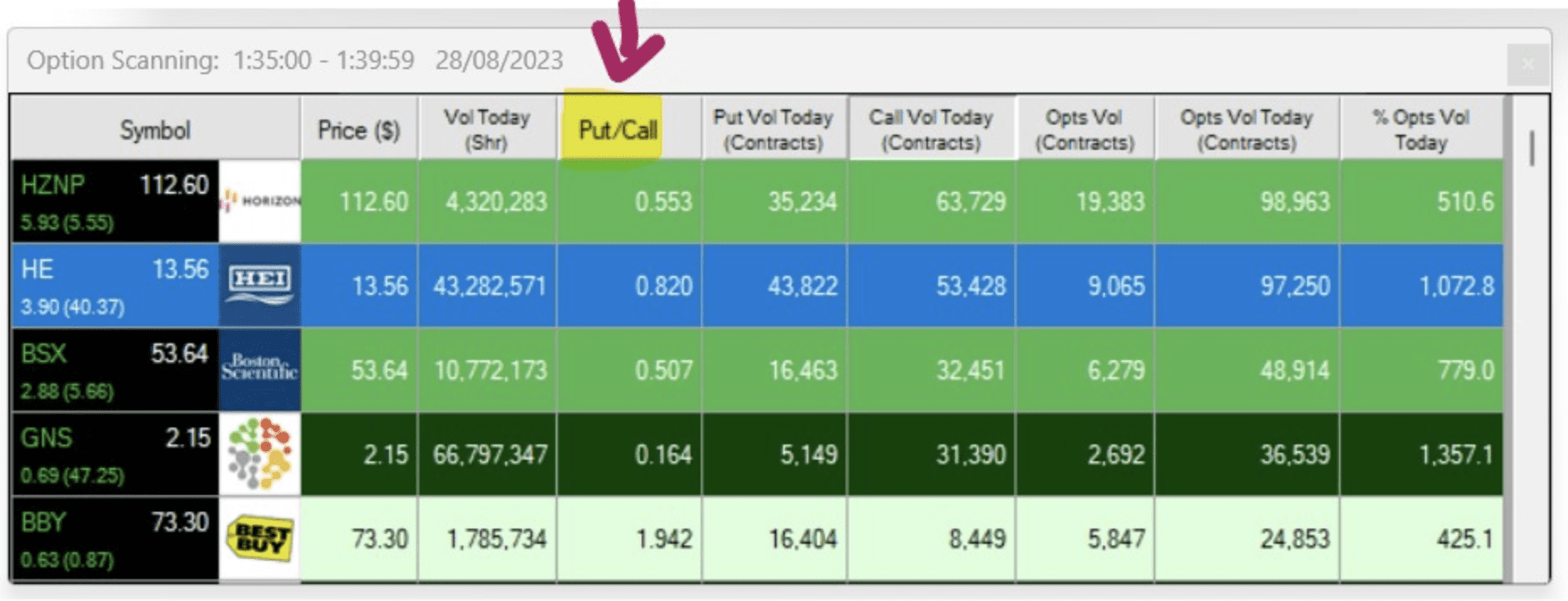5 Advanced Techniques for Analyzing Market Sentiment
5 Advanced Techniques for Analyzing Market Sentiment
By: Shane Neagle
Understanding market mood is as important in the fast-paced world of day trading as comprehending the complexities of the charts. The collective attitudes and opinions of traders create this subtle yet potent impact that greatly dictates the direction of price movements and the availability of trading opportunities. Any trading strategy starts with fundamental and technical research, but traders may gain a significant edge by having a thorough understanding of the psychological and emotional dynamics of the market.

The essence of market sentiment serves as the pulse of the trading environment, reflecting the fears, aspirations, and anticipations of investors. It acts as a vital sign that, once interpreted, can uncover the market’s true momentum or vulnerabilities, offering insights that go beyond conventional analysis techniques. For day traders, who rely on swift, well-founded decisions, tapping into these sentiment-driven nuances can be the key to seizing profitable opportunities instead of overlooking them.
Yet, the task of deciphering market sentiment is complex. It involves combing through extensive data sets, pinpointing trustworthy indicators, and reading the nuanced signs that denote changes in the investment community’s mood. This article introduces five sophisticated methods for accurately assessing market sentiment. Ranging from the chatter across social media channels to the detailed analysis of trading volumes and options market insights, these strategies furnish traders with an all-encompassing set of tools aimed at refining their trading approaches with sentiment analysis.
It’s crucial to keep in mind that sentiment research should be seen as a crucial component of a thorough trade analysis framework as we look at these cutting-edge strategies. By combining sentiment analysis with technical and fundamental analysis, traders may create a more complex, all-encompassing day trading strategy. This strategic integration enables traders to navigate the nuances of market sentiment successfully, transforming them into actionable trading achievements.
Social Media Analysis
Social media platforms have become an invaluable source of information for day traders who want to stay abreast of market sentiment in the modern world. Social media is a great fit for sentiment research because of this extensive discourse, which allows traders to glean insightful information from the group discussions on market patterns.

A range of specialized software and algorithms has been crafted to adeptly mine these digital discussions. These technological tools delve into social media posts, dissecting forum threads, and even scrutinizing the usage patterns of trading-related hashtags.
In doing so, they compile and assess the overall sentiment within the investment community across key platforms such as Twitter, Reddit, and StockTwits. However, this also leaves traders vulnerable to the deceptive effects of digital PR, which is an indispensable tool for many companies or actors looking to sway the market in their favor.
Furthermore, leveraging advancements in natural language processing (NLP) and machine learning, these sentiment analysis tools adeptly navigate the complexities of human language. They categorize discussions around specific stocks or the broader market into positive, negative, or neutral sentiments. This capability is crucial for traders, as a marked increase in positive discourse could signal a bullish trend, whereas a rise in negative commentary often points to bearish expectations.
Investors can obtain a competitive edge by incorporating sentiment research from social media into their trading tactics. This allows them to predict changes in market momentum, potentially even before these changes are reflected in real price movements. In the cutthroat and quick-paced world of day trading, the strategic integration of sentiment research technologies not only puts traders ahead of the game but also improves their ability to make decisions.
Volume and Price Analysis
In the nuanced world of day trading, grasping how trading volume interacts with price changes is key to decoding market sentiment. This type of analysis rests on the idea that the volume—representing the total shares traded during a certain period—confirms the reliability of a price change, shedding light on the collective mood of the market.
A rise in prices accompanied by an increase in trading volume generally indicates a bullish sentiment. It shows that an expanding pool of investors is ready to purchase stocks at elevated prices, demonstrating faith in the continuing rise of the market. Such conditions usually signal strong demand, potentially driving prices even higher, presenting an opportune moment for traders looking to ride the wave of momentum.

On the flip side, if prices drop while volume rises, it suggests bearish sentiment. This scenario reveals that the market is flush with sellers, and investors are keen to sell off their holdings, even at reduced prices, reflecting waning confidence in the asset’s worth and potentially forecasting further price declines.
Yet, understanding the interplay between volume and price goes beyond merely tracking their trends. The context in which these movements occur is paramount. For instance, a notable increase in price on scant volume may not truly indicate widespread market support for the price hike, suggesting the potential for a swift reversal. Conversely, a downturn in price on slim volume doesn’t necessarily signal disaster; it might merely indicate a brief drop in trading interest rather than a significant shift in market sentiment.
Gaining proficiency in analyzing volume and price dynamics equips traders with the ability to judge the market’s true intentions, providing a layered insight into market sentiment. Keeping an eye on these trends prepares traders to make better-informed choices, aligning their trading actions with the prevailing market currents. When combined with other analytical tools, this approach significantly broadens a trader’s capabilities, improving their navigation through the intricate landscape of day trading.
The Commitment of Traders (COT) Report
The Commodity Futures Trading Commission’s (CFTC) Weekly Commitment of Traders (COT) report stands as a pivotal resource for anyone looking to understand positioning within futures markets. This report segments participants into three principal categories: non-commercial traders, encompassing institutional investors and major speculators; retail traders, which include individual or smaller market players; and commercial traders, commonly known as hedgers. These comprehensive position breakdowns in futures contracts shed light on the sentiment and movement within the commodity markets specifically.
Businesses commonly utilize futures contracts as a hedging strategy against expected future volatility in the price of their commodities in an attempt to lower risk. As to the COT study, traders that participate in hedging operations and position themselves for probable price declines may be indicative of a negative mindset in the market. Conversely, a reduction in hedging positions could signal a bullish mood, with expectations set on price increases.

Moreover, non-commercial participants, who are more inclined towards profiting from price fluctuations than hedging, significantly contribute to the market sentiment indicator. An increase in long positions (betting on price rises) within this group, as shown in the COT report, points towards a bullish sentiment. On the other hand, an increase in short positions (betting on price falls) indicates a bearish outlook.
Despite retail traders making up a smaller fraction of the market than the other two categories, shifts in their trading positions offer valuable insights into wider market trends.
Traders can assess the status of the market and forecast future price changes by examining the COT report. Observing the way different traders are changing positions might provide insight into market patterns and trading tactics. In the futures trading sector, the COT report is a useful instrument that offers essential data for educated strategic decision-making.
The Put/Call Ratio
One important metric that reveals the overall sentiment of market participants is the put/call ratio. It does this by comparing the number of call options, which investors choose when they anticipate market expansion, to the quantity of put options, which investors often choose when they anticipate a market fall. This comparison is a useful tool for determining the general sentiment among market players. As a result, the put/call ratio serves as a measure that sheds light on the situation of the market right now.
A heightened ratio, where the volume of put options significantly surpasses call options, denotes bearish sentiment. It implies that a considerable number of traders are either anticipating or hedging against a market drop. This high percentage frequently indicates general hesitancy or pessimism over the direction of the market, implying that traders anticipate a decline in prices.

Conversely, a diminished put/call ratio indicates bullish sentiment, occurring when the trading volume of call options outnumbers that of put options. This demonstrates collective optimism among traders, reflecting confidence in the market’s capacity for expansion. In this scenario, numerous investors are positioning themselves to leverage anticipated increases in stock prices.
However, interpreting the put/call ratio demands nuanced analysis. Extremes in this ratio, whether high or low, can serve as contrarian indicators. For example, an exceptionally high put/call ratio might suggest that the market sentiment has skewed too pessimistically, possibly priming conditions for a market recovery. In contrast, a particularly low ratio could signify excessive optimism, potentially foreshadowing a correction.
Essentially, one of the most important tools for interpreting market emotion is the put/call ratio. Traders may more skillfully navigate the market’s swings by customizing their techniques to match the sentiment of the market by comprehending the information it offers on investor emotions.
Market Surveys and Indices
Indicators and surveys are essential tools for interpreting the mental and emotional states of investors, providing methodical means of comprehending and responding to the general atmosphere in the trading room. The Fear & Greed Index and the American Association of Individual Investors (AAII) Sentiment Survey are two important tools for measuring this attitude as they both shed light on the general perspective of market players.
Weekly investor sentiment is gauged by the AAII mood survey, which asks participants to rate their outlook for the stock market over the next six months as neutral, bearish, or optimistic on the market’s future trajectory. An increase in positive sentiment usually denotes a broad feeling of investor confidence, whilst an increase in negative sentiment might suggest a general feeling of unease or worry. The poll is a priceless tool for monitoring these shifts in investor opinion and for revealing potential future paths of the market.
Conversely, the Fear & Greed Index adopts a more comprehensive stance, aggregating various data points to construct an overarching view of market sentiment. It assesses seven different elements, including market momentum, the strength and spread of stock prices, the ratio of put to call options, junk bond demand, market volatility, and the pursuit of safe-haven investments. These factors are synthesized into a score from 0, indicating “Extreme Fear,” to 100, representing “Extreme Greed.” This index serves as a barometer for the market’s emotional climate, suggesting times to be wary of over-optimism or to recognize potential buying moments during peak fear.
Utilizing these instruments to gather and interpret investor attitudes offers a concrete measure of the market’s emotional pulse, crucial for traders aiming to align their strategies with the prevailing market sentiment. Integrating these insights into their analysis enables traders to adeptly navigate the fluctuating moods of the market, guiding their trading decisions with a blend of insight and strategy.
Conclusion
Exploring day trading extends beyond mastering technical charts and the core principles of finance; it’s equally crucial to tune into the collective mood swaying the market. Instruments such as the AAII Sentiment Survey and the Fear & Greed Index gift traders with vital glimpses into the general sentiment permeating the investment sphere. When these insights are adeptly applied, they can sharpen trading decisions, substantially boosting the likelihood of fruitful outcomes.

Weaving sentiment analysis into your trading strategy invites a holistic view of market dynamics. Traders might uncover chances that might have otherwise gone overlooked by adjusting their strategies to match the prevailing feeling in the market by becoming aware of its emotional ups and downs. Proficiency in interpreting and capitalizing on market sentiments elevates knowledgeable traders and gives them the adaptability to confidently navigate through market turbulence.
Achieving success in leveraging market sentiment hinges on its thoughtful fusion with traditional trading tactics. Blending the depth of sentiment analysis with the detailed scrutiny of technical and fundamental analysis yields a comprehensive market overview. This integrated strategy endows traders with the insight to make informed, all-encompassing decisions, nurturing an environment of resilience and agility essential for navigating the swift currents of day trading.

